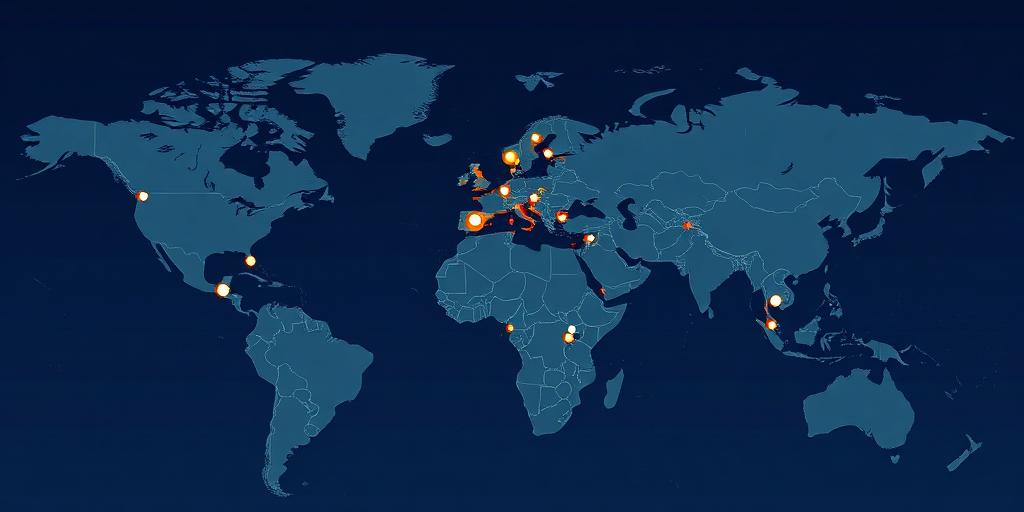The Impact of Demographics on Geopolitics
Demographics, the statistical study of human populations, exert a profound influence on geopolitics, the interplay of power and international relations. Shifts in population size, age structure, distribution, and composition can reshape a nation's economic strength, political stability, and foreign policy objectives. This article explores the multifaceted ways in which demographics shape the geopolitical landscape.
Population Size and Economic Growth
A nation's population size is a fundamental determinant of its economic potential. Larger populations can translate into larger labor forces, increased consumer demand, and greater economies of scale. However, population size alone is not sufficient for economic prosperity. Factors such as education, healthcare, and infrastructure also play critical roles. Countries with rapidly growing populations may struggle to provide adequate resources and opportunities for their citizens, leading to social unrest and political instability. Conversely, countries with declining populations may face labor shortages, reduced economic growth, and challenges in maintaining social welfare systems.
Age Structure and Dependency Ratios
The age structure of a population, particularly the balance between working-age individuals and dependents (children and the elderly), has significant economic and social implications. Countries with a large proportion of working-age individuals, known as a "demographic dividend," may experience rapid economic growth as a result of increased productivity and savings. However, this demographic dividend is not automatic. It requires investments in education, healthcare, and job creation to fully realize its potential. Countries with aging populations, on the other hand, face increasing healthcare costs, pension burdens, and potential labor shortages. These challenges can strain government finances and require adjustments to social policies.
Population Distribution and Urbanization
The distribution of a population within a country can also have geopolitical consequences. Urbanization, the movement of people from rural areas to cities, is a global trend that has reshaped economic and political power. Cities are often centers of innovation, economic activity, and political influence. However, rapid urbanization can also lead to challenges such as overcrowding, inequality, and environmental degradation. Countries with uneven population distribution may face regional disparities in economic development and political representation. These disparities can fuel social tensions and separatist movements.
Population Composition and Social Cohesion
The composition of a population, including factors such as ethnicity, religion, and language, can influence social cohesion and political stability. Countries with diverse populations may face challenges in managing cultural differences and preventing discrimination. Social inequalities and historical grievances can exacerbate tensions between different groups, leading to conflict and instability. However, diversity can also be a source of strength, fostering innovation, creativity, and cultural exchange. Countries that successfully manage diversity can reap significant economic and social benefits.
Migration and Geopolitical Shifts
International migration, the movement of people across national borders, is a major driver of demographic change and has profound geopolitical implications. Migration can fill labor shortages, boost economic growth, and enrich cultural diversity. However, it can also create social tensions, strain public services, and raise concerns about national identity. Countries that receive large numbers of immigrants may face challenges in integrating newcomers into society and addressing concerns about competition for jobs and resources. Countries that experience significant emigration may lose skilled workers and face challenges in maintaining economic competitiveness.
Case Studies
- China: China's one-child policy, implemented from 1979 to 2015, has had a profound impact on its demographics. The policy led to a skewed sex ratio, with more men than women, and an aging population. These demographic trends pose significant challenges for China's future economic growth and social stability.
- Japan: Japan is one of the world's most rapidly aging societies. Its declining birth rate and increasing life expectancy have created a shrinking labor force and a growing burden on social welfare systems. Japan is exploring various strategies to address these challenges, including encouraging immigration and promoting automation.
- Nigeria: Nigeria is Africa's most populous country and one of the fastest-growing populations in the world. Its rapid population growth poses challenges in providing adequate education, healthcare, and employment opportunities for its citizens. Nigeria's demographic trends have significant implications for regional stability and economic development.
Conclusion
Demographics are a critical factor shaping the geopolitical landscape. Changes in population size, age structure, distribution, and composition can have profound economic, social, and political consequences. Understanding these demographic trends is essential for policymakers, businesses, and individuals to navigate the challenges and opportunities of the 21st century. By addressing demographic challenges proactively and investing in human capital, countries can enhance their economic competitiveness, promote social cohesion, and strengthen their geopolitical position.









